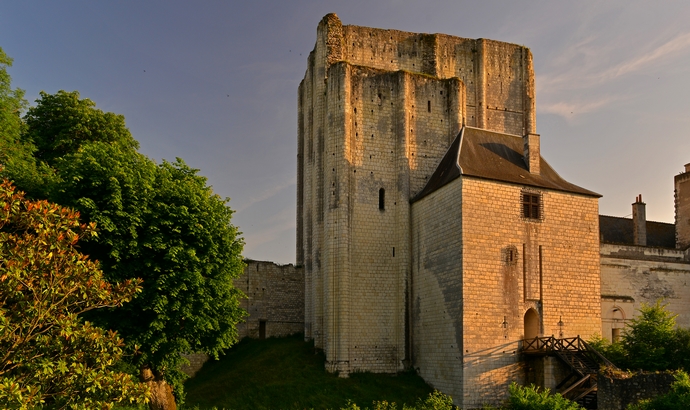The story of the Royal City
The Royal City of Loches was defended to the south by a keep which was built between 1013 and 1035 by Foulques III Nerra, Count of Anjou. It is now considered one of the best-preserved from the Romanesque period.


The keep was besieged on several occasions, namely during battles between the Capetians and Plantagenets. It gained new structures over the centuries: chemise (wall), curtain wall (12th century), protruding towers (13th century), governor's house (14th century), round tower or new tower (long known as Louis XI Tower), Martelet Tower, barbican (15th century) and caponiers (16th century).
The site was a count’s residence, a royal fortress then a royal prison in the 15th century for high-ranking political prisoners such as Jean II, Duke of Alençon, Philippe de Commines, Ludovico Sforza and Jean de Poitiers. The prison became the regional detention centre between 1801 and 1926.
Louis I, Duke of Anjou, built a lodge to the north of the spur at the end of the 14th century. Charles VII visited regularly from 1418 and made the City the second largest stronghold after Chinon. Joan of Arc met the king here in May 1429 after the victory of Orléans. The king often stayed in Loches with his favourite, Agnès Sorel, in the 1440s.
Charles VIII and Louis XII had the first lodge expanded in the 1500s. The jewel of this wing is Anne of Brittany’s flamboyant Gothic-style oratory.
The Valois dynasty’s return to Ile-de-France in the 16th century saw the royal lodge go into hibernation. It was used as a court of law and prison for revolutionaries (1793) before being a sub-prefecture and civil court until the 1920s.
Indre-et-Loire Council, the site’s owners, first opened it to visitors in the 1950s. The landmark has been the subject of a promotional and cultural development project ever since.